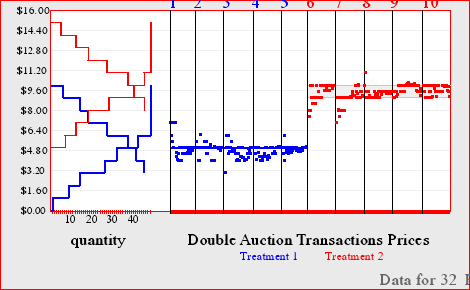Over the years, much has been written about the methods employed in economic theory. The recent financial crisis and the ongoing economic crisis in Europe have resulted in a marked increase in criticisms directed at mainstream economic theory ‘ neoclassical economics (more precisely, marginalist economics). Internal critics of neoclassical economics have been modifying certain assumptions of marginalist economics and have ‘developed’ new forms of economic knowledge such as law and economics, welfare economics, neuroeconomics, new institutional economics and so on. Critics external to marginalist economics, often known as heterodox economics (examples include Classical/Sraffian economics, Post-Keynesian economics and Marxian economics), have provided compelling logical critiques of the theory. Additionally, they also supplement their analysis with empirical and historical details (which is not uncommon in neoclassical economic either). This post is reflective in nature and tries to comprehend the character of economic theory along with a commentary on its contemporary function in the form of questions, thereby reinforcing the reflective nature of this blog post.
First, the definition adopted has a critical influence on the aims and scope of economic theory. For instance, the definition of economics as a study of reproduction and accumulation of wealth/income (characteristic of the heterodox economic theories mentioned above) is qualitatively different from a definition which views economics as a study of allocating scarce resources among competing ends (characteristic of neoclassical economics). The former definition is more modest in scope and seeks to provide answers to a limited number of questions vis-‘-vis the latter one which encompasses any and every issue where human decisions are involved. Examining the causes of accumulation and growth warrant the following theories: a theory of value and distribution; a theory of activity-levels (at times, this is absent); and a theory of economic growth. While examining the causal connections within these theories, some features of human behaviour are taken as given. The most important, perhaps, is the human propensity for self-betterment in material terms. Such a limited domain enables these economic theories to be more specific and definite thereby improving their explanatory power in the analysis of economic growth, unemployment, technical progress, wage dynamics and so on. An extremely wide scope is entailed by the definition of economics present in neoclassical economics; consequently, we see the emergence of sub-fields such as: cognitive economics, neuroeconomics, economics of philosophy, experimental economics, evolutionary economics, cliometrics, etc. The questions addressed in many of these sub-fields often have nothing to do with the generation of income or its distribution. The questions being asked are different, and quite relevant in understanding various aspects of human behaviour and institutions. However, if the aim of economic policy and economists is to improve material well-being, neoclassical economics and its sub-fields are not entirely satisfactory, primarily for logical reasons. The two most dangerous tenets of marginalist economics are the marginal productivity theory and the tendency to full employment.
Second, economic theory, I think, has two broad functions. One is to explain the logically necessary connections which exist between various economic variables, and the direction of causation. Usage of terms such as exogenous, endogenous, dependent and independent variables convey the direction of causation. For example, classical/Keynesian theory argues that activity levels and economic growth is demand-led whereas marginalist economics posits that activity levels and economic growth is supply-driven. This is a theoretical debate, which cannot be resolved by recourse to empirical data given the high degree of correlation present among (macro)economic variables such as income, investment, saving, etc. Another reason for the debate being unresolved is the incommensurability of the two kinds of economic theory involved ‘ classical/Keynesian vs. marginalism. The other broad function of an economic theory is to provide an explanation for the manner in which these (marco)economic variables grow over time; strictly speaking, the dominant economics influences the way in which data is collected and presented and the explanation for the data is also provided by the dominant economics. (A chief, although not very reliable, exception to this is the econometric technique known as VAR which attempts to undertake ‘measurement without theory’.) Much of these numbers will need to be supplemented with contextual and historical details. Also, in economics, one needs to be careful about assigning too much ‘reliability’ to data so much so that they are considered ‘adequate’ to overturn a particular economic theory. This is not to say that data does not matter, but that it should be treated with significant caution.
Third and finally, it is of great practical importance to know what economic policies can be advanced based on economic theory, supplemented by data or not. In other words, what conditions must a particular theory fulfil in order for it to be reliable’ Is an empirical assessment necessary or is it sufficient’ How sound must the logic be’ To what extent must the assumptions be scrutinised’ Can econometric analysis provide conclusive evidence’
